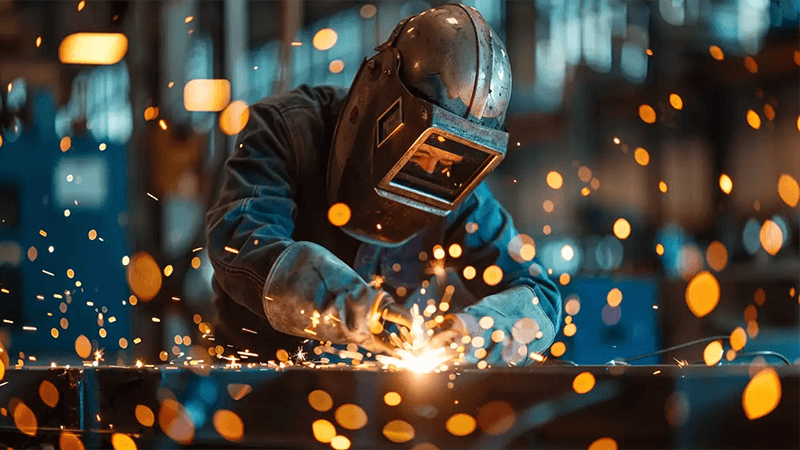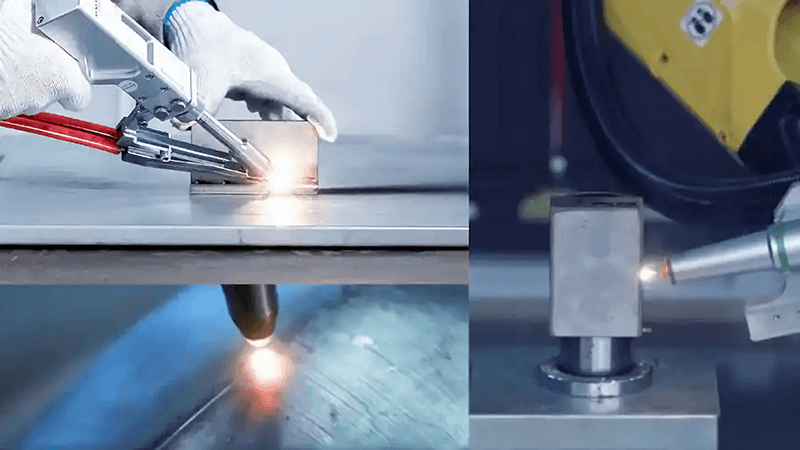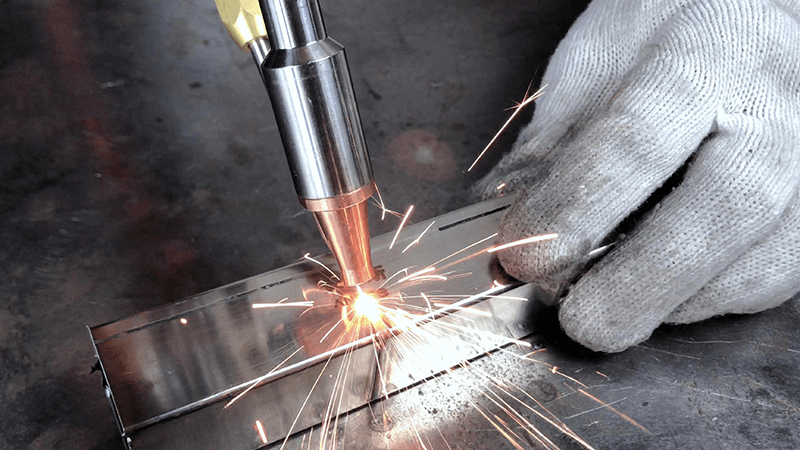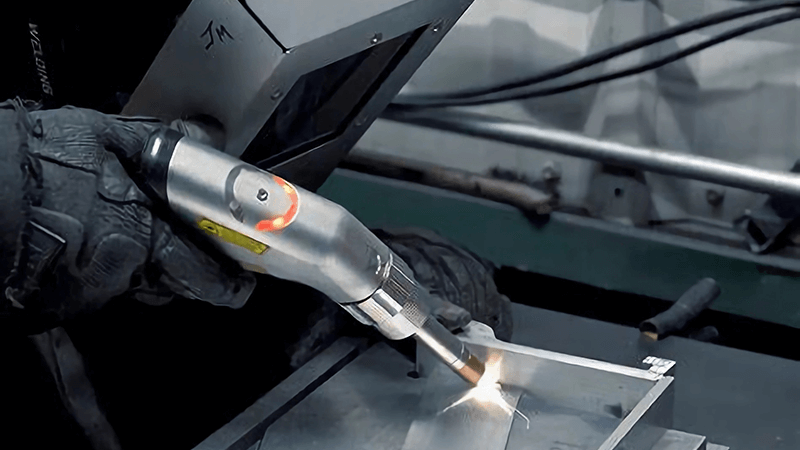I hear this question a lot. My customers want clean welds, low heat input, and fast setup. They also want simple training and solid service. I answer with data and field results, not hype.
Lincoln and Miller both build strong laser welding options. Lincoln pushes high-speed cells and a new handheld system. Miller focuses on simple handheld tools with presets and clear safety. The better choice depends on your parts, your floor, and your service plan.
I write this as the founder of Kirin Laser. I run OEM programs for handheld laser welders, laser cleaning, and laser marking, plus integrated laser cells. I compete with value and honest support. I also resell where it helps my clients. My goal is fit, not brand fights.

Which brand of welding machine is best?
My buyers want one clear winner. I will not give that, because your work is unique. A thin stainless cover needs a different tool than a thick mild steel bracket. Your staff and your tolerance drive the answer. I match the machine to the job.
If you want a robotic laser cell for speed and repeatability, Lincoln’s Laser-Pak® line is proven in production. If you want a handheld tool with a short learning curve, Miller’s OptX™ is strong. If you want a tailored handheld with custom presets or private label, I build that at Kirin Laser.
How I compare Lincoln, Miller, and Kirin for your case
I start with your parts. I write down material, gauge, joint type, and fit-up. I mark how steady the operator can hold the torch. I note if you need wire feed. I check gas, fume control, and safety zones. Then I look at the platform.
Platform fit at a glance
| Scenario | Lincoln | Miller | Kirin Laser |
|---|---|---|---|
| High-volume, repeat parts in cells | Laser-Pak® robotic cells excel at speed and uptime in fixed jigs. | Not a fit. OptX™1 is handheld. | We integrate cell partners when you need custom fixtures. |
| Fast ramp with new staff | Flex Lase™ handheld offers a 2 kW package with safety gear. | OptX™ has simple presets and a clean HMI for quick wins. | We ship handhelds with your presets and QR help. |
| Private label / custom UI | Limited by brand rules. | Limited by brand rules. | Full OEM options, labels, manuals, HMI themes. |
| Price and spares flexibility | Set by North American channels. | Set by North American channels. | Direct OEM programs, spare kits tuned to your jobs. |
Lincoln now offers Flex Lase™2, a 2 kW handheld system. It targets quick setup and higher travel speed versus TIG. That closes a gap for shops that want a big brand handheld with bundled safety gear.
Miller’s OptX™ handheld line focuses on ease of use. It includes wire feed options and presets for common metals. Many teams like the way new operators learn on it. It also has clear training
At Kirin Laser, I ship handheld fiber laser welders3 with locked parameter libraries for your parts. I also build private-label kits4 with plates, manuals, and QR links. I set your wire, gas, and cycle library before shipment. I do this for distributors who want a brand they control.
What I measure before I recommend
- Weld bead width, penetration, and undercut on your actual part
- Heat tint and warp on thin stainless and aluminum
- Travel speed with and without wire feed
- First-time-fix rate for new operators after two hours of training
- Filter load and optics contamination over 40 hours of run time
I pick the “best” brand only after these tests. This keeps your risk low. It also keeps your promise to your customer.

What is the most used welding machine?
People often ask me what most shops use. The “most used” depends on the shop type. Small and mid-size fab shops move fast and run varied work. They choose handheld fiber laser welders with 1–2 kW power. Big automotive cells use robotized lasers at higher power.
In handheld laser welding, 1–2 kW fiber systems dominate day-to-day work. They join thin stainless, carbon steel, and aluminum with speed and low heat. In robotic lines, laser cells with beam delivery and part handling dominate high volume.
Where handheld lasers win today
I see the same pattern across states and sectors. Job shops need flexible tools. Handheld lasers let one person do fit-up5, tack, and finish in minutes. A TIG job that once took 10 minutes can take two or three. The heat-affected zone stays small. Distortion drops, which reduces rework.
Common use cases I see
| Material & Thickness | Joint | Typical Power | Reason |
|---|---|---|---|
| 304 SS, 0.8–1.2 mm | Lap or fillet | 1 kW | Fast, clean bead, little warp |
| 5052 Al, 1.5–2.0 mm | Fillet with wire | 1–2 kW | Fill small gaps, bright finish |
| Mild steel, 1.0–2.0 mm | Butt | 1–2 kW | Strong joint, easy to dress |
| Galv. steel, thin | Overlap with clean zone | 1 kW | Low spatter, quick cleanup |
In the field, fit-up matters more than wattage. A tight, consistent gap beats a higher kW number. I coach teams to prep edges, clamp well, and pick the right nozzle. I also teach them to keep optics clean. A dusty lens will waste power and kill quality.
On robot lines, “most used” means systems that tie the laser, the wire, the scanner, and the motion into one program. Lincoln’s Laser-Pak® covers that world with cells that fit many parts. My team also integrates cells when you need custom fixtures or scanners. The idea is the same. Lock the recipe. Protect the optics. Move parts in a steady rhythm.
I keep spares near the line. Nozzles, lenses, and filters sit in a small kit at the cell. I label every part with the same SKU in the manual and on the bin. This reduces errors. It saves hours.

What is the highest quality welding?
I define “highest quality” in clear terms. The weld must meet design strength. The bead must look clean. The heat tint must be low. The part must pass leak or pull tests. The microstructure must be sound. The process must be repeatable.
Laser welding achieves top quality when the joint is prepared, the beam is stable, and the gas and wire are matched to the alloy. CW helps speed on thicker parts. Pulsed helps on thin or heat-sensitive parts. Good clamping and clean optics matter as much as power.
How I get to “highest quality” in practice
I split quality into five buckets. Each one has a simple action. I keep the language simple so the team can use it on day one.
1) Joint prep and fixturing
I ask for clean edges and tight gaps. I build simple jigs that hold parts with the right angle. I set stoppers so the part always sits the same way. If the part moves, the beam hits the wrong spot. The weld will fall short. A $300 jig can save $3,000 in rework.
2) Beam delivery and parameters
I pick a spot size that fits the joint. I set power, travel speed, and beam oscillation for the alloy and thickness6. I save that preset to a library and lock it. I use wire feed only when I need to bridge a gap or adjust bead shape. I keep the wire aligned with the beam. If the wire lags, the bead gets messy.
3) Shielding gas and fume
I use argon or mixed gas to protect the pool. I adjust flow to cover the bead without turbulence. I keep the fume extractor close, but not too close. If the extractor pulls too hard, the gas shield breaks. The bead oxidizes. On stainless, I add a trailing shield for long beads.
4) Optics and cleanliness
I train the team to change nozzles and clean lenses before each shift. I log lens changes. I inspect windows with a microscope when needed. A clean optical path keeps power stable. This reduces heat tint and porosity. It also prevents random defects.
5) Inspection and feedback
I set quick checks. I use coupons to confirm depth and width. I do dye-penetrant on critical seams. I use leak tests on tanks. I review photos of beads with the team. I track the first-time-pass rate. The number tells me if the system is in control.
Quick map from my playbook
| Goal | Setting | Note |
|---|---|---|
| Minimal warp on thin SS | Lower power, faster travel, oscillation | Use tight clamping |
| Strong fillet on Al | Slightly higher power, add wire | Dry gas lines, check spool |
| Low tint on SS | Clean lens, argon 15–20 L/min | Use trailing shield if long |
| Clean cosmetic bead | Smaller spot, steady hand | Practice on coupons first |
With robotic systems7, I favor solutions that keep wire pre-heated and stable. Lincoln’s Precision Power Laser™ process shows how hot-wire laser can raise deposition without arc. That kind of control helps when you need both speed and nice beads.
I judge “highest quality” by the full story. The best bead in a lab means little if the operator cannot repeat it on a busy shift. I design for repeat wins, not single demos.

What's the best welding machine for beginners?
Beginners fear blow-through, warping, and ugly beads. Managers fear long training time. I want tools that make good habits easy. I like clear UIs, safe interlocks, and presets that actually work. I also want a supplier who answers the phone.
For beginners in laser welding, a 1–2 kW handheld fiber laser with locked presets is the best start. Miller OptX™ is strong for simple training. Lincoln Flex Lase™ brings a bundled kit with safety gear. Kirin Laser offers OEM handhelds with your presets and QR guides.
My beginner path that cuts risk and time
I take a new operator and give them wins in the first hour. Wins build confidence. Confidence builds pace. The tool matters, but the method matters more.
A starter plan I use in shops
| Step | Goal | Tooling & Notes |
|---|---|---|
| Safety first | Understand Class 4 risks | Laser-rated helmet and glasses, safe zone tape |
| UI basics | Select the right preset | Lock “Good” and “Better” recipes only |
| Coupons | Practice with same alloy | 10 coupons, 3 joint types |
| First part | Ship a real part | Short seam, clear clamp |
| Review | Lock the lesson | Photo bead, short checklist |
Miller OptX™8 wins with a simple interface. Operators see clear modes for spot, autogenous, and wire. The presets reduce guesswork. That lowers scrap in
Lincoln’s Flex Lase™9 ships as a package with a feeder, PPE, and a cart. This makes setup easy for small teams. I see value where buyers need a “ready to weld” kit on day one.
Kirin Laser handhelds10 are built for OEM partners and distributors. I lock the presets that match your top three jobs. I print labels and QR codes that jump to a short video. I ship starter kits with nozzles, lenses, and filters. I teach your team to clean optics and swap parts fast.
A quick ROI frame for a new shop
| Item | Baseline (TIG) | Handheld Laser | Note |
|---|---|---|---|
| Training to first saleable part | 2–3 days | 2–4 hours | With tight presets |
| Cycle time per 300 mm seam | 8–10 min | 2–3 min | Depends on fit-up |
| Rework rate in week one | 10–15% | 3–5% | Clean optics, good clamps |
| Finish work time | 5–8 min | 1–2 min | Less grinding |
Now, a short field story. An automotive client had thin 304 stainless body panels. TIG caused warp and long rework. We ran trials on a Miller OptX™ handheld with a wire feeder and tight clamps. The team hit clean, repeatable beads with no warp. Rework fell fast. Takt time dropped. Morale rose. The lesson was simple. The right tool and a steady method beat old habits. (I still teach TIG. I just pick the best tool for the part.)

Conclusion
I choose between Lincoln and Miller by use case. If you want robotic laser cells and high speed, Lincoln’s Laser-Pak® line is a strong path. If you want simple handheld training and fast wins, Miller’s OptX™ helps. If you want private label, custom presets, and tailored kits, Kirin Laser11 delivers that with OEM discipline. I test on your parts, lock recipes, and back you with spares and honest support. That is how I protect your name and mine.
-
Discover how OptX™ simplifies training for new operators with its user-friendly features. ↩
-
Explore the advantages of Flex Lase™ for quick setups and enhanced travel speeds in welding. ↩
-
Learn about the benefits of handheld fiber laser welders for flexibility and efficiency in welding tasks. ↩
-
Find out how private-label kits can enhance branding and customization for welding distributors. ↩
-
Learn about the critical role of fit-up in achieving strong and quality welds. ↩
-
Discover how to optimize laser welding settings for different alloys and thicknesses to enhance weld quality and efficiency in your projects. ↩
-
Discover how robotic systems enhance precision and efficiency in welding, ensuring consistent quality and reducing manual errors in high-demand environments. ↩
-
Explore how Miller OptX™ enhances welding efficiency and reduces scrap with its user-friendly interface. ↩
-
Discover the advantages of Lincoln’s Flex Lase™ package for quick and easy welding setups. ↩
-
Learn about the unique features of Kirin Laser handhelds that cater specifically to OEM partners and distributors. ↩
-
Find the best laser welding machine and laser welding solutions from Kirin Laser, clicking this link to get all your needs for your applications. ↩





